Raspberry Pi: Where to buy the hard-to-find latest model and its alternatives
Raspberry Pi boards are tiny, incredibly versatile computers that have been put to an increasing number of practical, fun, and diverse uses by hobbyists. This exceptional flexibility has only been increased over the years by manufacturers coming out with a plethora of add-ons like sensors, touchscreens, wireless connectivity modules, and purpose-built cases.
All of this popularity created strong demand even before the world’s supply chain was struck by the impacts of the COVID-19 pandemic and the subsequent chip shortages still plaguing every industry from auto manufacturing, to medical devices, to Raspberry Pi production. Matters were made even worse by the increasing interest of hobbyists with unexpected free time over the pandemic scooping up boards for use in their various projects.
Today, finding a Raspberry Pi board of any sort to buy can be a frustrating and, ahem, fruitless experience. To help you out in your quest to track down these elusive mini PCs, we’ve created this handy guide for the best retail sites to check for a reasonably priced Raspberry Pi board, locations to acquire alternative Pi boards that can be used for some projects, and even alternatives from other manufacturers that can serve similar purposes.
Raspberry Pi (4th gen)
The latest and greatest version of the Raspberry Pi
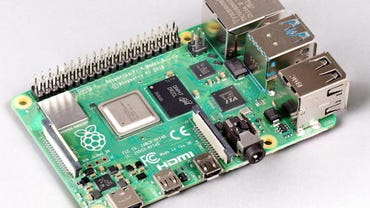
This latest main-line generation from the Raspberry Pi Project includes the Raspberry Pi 4 with 1GB to 8GB of onboard RAM as well as the Pi 400 and Pi Pico, which we’ll cover in separate sections below. As the latest model, the Pi 4 is among the hardest to find. It launched about two years ago with an MSRP of $35-$70, depending on the amount of RAM included.
More: Raspberry Pi 4 Model B review: A capable, flexible and affordable DIY computing platform
Unfortunately, acquiring a Raspberry Pi 4 as a bare board right now will require a lot of patience, a deep pocket book, or both. The original price range has been impacted by price increases at the Raspberry Pi Project (brought on by increasing chip costs) as well as resellers attempting to exploit the scarcity to hike prices up.
While the Raspberry Pi Project does price control the cost of the units at authorized merchants, those sellers frequently see their stock emptied within minutes of posting new availability, especially now that bots are being applied to the task of buying out boards for later scalping. Reliable outlets like Adafruit (one of the earliest and most trusted sources for Rasperry Pi hardware) have put buying limits and verification technologies in place to prevent being wiped out by bots. But, even then, enough legitimate, human customers remain to drain supplies rapidly.
If you need a Pi 4 board immediately, expect to pay anywhere between $150 and $250, depending on the RAM included. If you must have a main-line Pi 4 board, but simply can’t stomach that level of price gouging, I’d recommend signing up for email notifications at Adafruit or Micro Center. Both companies offer retail prices far closer, if not in line with, the original MSRPs for Pi 4 boards at various memory levels.
More: Raspberry Pi: Why they are so hard to buy right now, and what you can do about it
If you choose to purchase your Raspberry Pi 4 from a seller not listed in this article, please make sure it is a reputable, well-reviewed retailer. The scarcity of Pi boards has led to an explosion in scams surrounding them. If a seller’s price for the board you’re seeking seem too good to be true, it probably is. Try to have patience, or save up some extra cash, and purchase your board through a reputable retailer, or at least from a reseller offering the product via a website that provides buyer protections in the event your order is not delivered, or is not as described.
Raspberry Pi 400
The easiest way to get into Raspberry Pi right now, if you’re ok with the form factor
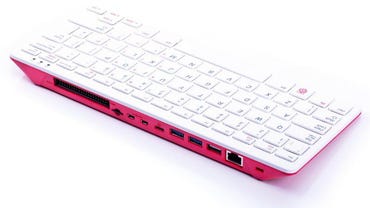
The Raspberry Pi 400 is essentially a modified 4GB model of the Raspberry Pi 4 board with additional cooling which makes it safe for the unit’s CPU to run at a slightly different clock speed. Rather than being sold as a bare board, the entire Pi 4 is loaded into a compact 60% keyboard with its included I/O ports on the keyboard’s top edge.
The inclusion of the keyboard may make this solution less than ideal for many applications one would want a Raspberry Pi 4 unit for. However, many other uses (gaming, text editing, media server applications, etc.) would have required the connection of a keyboard for control or text entry purposes anyway. Not only does the Pi 400 mean you don’t have to add an external peripheral for this purpose, but its unique supply means it also tends to be in stock for MSRP far more frequently than its bare-board cousins.
The Pi 400 is also commonly offered as part of kits, frequently for the same price or less than the unit itself. The Adafruit option below includes a microSD card, data cable, power supply, mouse, and a beginner’s guide.
More: 5 best Raspberry Pi kits: Top starter and pro kits
Raspberry Pi Pico
A tiny, cheap, available option for compact projects and those just starting out
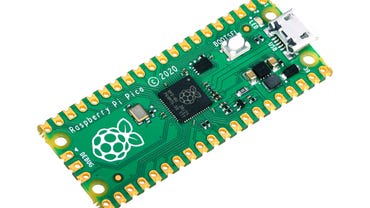
This even tinier-than-usual board includes only a single MicroUSB port and lots of solder points for headers or components of your choice. While it’s not well suited for the more advanced applications its larger brethren can handle, it’s perfect for tiny projects such as wearable electronics, single-use sensors, remote monitoring devices, and other uses that require minimal processing power.
The Pi Pico can also be expanded via a variety of accessories designed to work with its headers, as well as via custom-designed breadboards for custom-designed electronics projects, and various other accessories to increase versatility.
It’s also, by far, the cheapest option available right now, and is generally more readily available at its MSRP. Even at double the original $4 price point, it’s still an excellent value for the right project.
Raspberry Pi Zero 2 W
A mid-range solution based on the previous generation Raspberry Pi
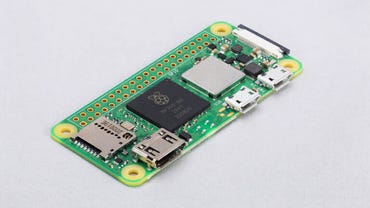
The Raspberry Pi Zero line has been around since 2015 to offer a lower-cost option for users that don’t need the full computing power and I/O port selection of the full-sized Pi. Over the years, it’s been revised to add improved processors, new wireless connectivity options, and other improvements.
The latest version in the line is the Pi Zero 2 W. Launched in late 2021, this model includes a system in a package (SiP) design based on the previous-generation Pi 3. This means it’s very close in capability (for the right project) to the Pi 4, and is often more easily acquired due to being a slightly less versatile option than its top-of-the-line siblings.
More: Raspberry Pi at 10: The tiny computer with a giant impact
You should definitely check to see if the project you have in mind can be handled by the less powerful Pi Zero 2 W. But, if it can, you can generally purchase the units for something closer to $75. This still represents a massive premium over the intended MSRP of around $15, but it may, nonetheless, be the most cost-effective and readily available option for the right buyer.
NVIDIA Jetson Nano
A Raspberry Pi 4 alternative that may be available when it’s not
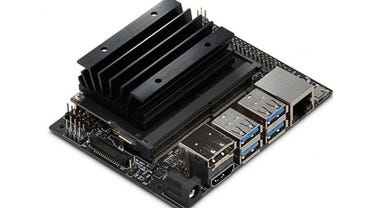
One of the most well-liked entries on our Best Raspberry Pi alternatives list, the NDVIDIA Jetson Nano aims to fill many of the same roles as the Raspberry Pi 4. It provides a similar set of I/O ports, 2GB of RAM, and a fairly identical set of extremely diverse applications.
Unfortunately, this resemblance to the Raspberry Pi 4 means that it is also being bought up at an alarming rate. But, if you happen to have a project that can make use of either the Pi 4 or this similar all-in-one mini PC like this, then the extra option means you have another chance of successfully snagging one. Just make sure whatever plans you have for the NVIDIA Jetson Nano are compatible with its included chipset and I/O.
Alternatives to Consider
The NVIDIA Jetson Nano Developer Kit isn’t the only alternative available. Also consider these options below if you need something right now.
Raspberry Pi buying FAQ
Is the Raspberry Pi 4 shortage likely to end soon?
Unfortunately, there’s no reliable way to predict this. Like all manufacturers currently struggling with ongoing global chip shortages, the Raspberry Pi Project is attempting to increase its production volume, but it’s being constrained by its suppliers’ struggles. This chain reaction of scarcity goes all the way up the manufacturing chain, right to the companies providing the raw materials used in these devices.
As more and more companies continue to react to the flaws and fragility in the supply chain that have recently been revealed, supplies should increase to the point where they are once again able to meet demand. Whether this takes months or years is anyone’s guess, and is largely dependent on what other disruptions (foreseeable and unforeseeable) take a swipe at supply levels.
Which is the best Raspberry Pi board for beginners?
This depends largely on the types of projects you’d like to pursue.
If you’re aiming for something simple, like teaching kids about coding and electronics, something as cheap as the Pi Pico is more than enough to create many fun and educational projects ranging from wearable devices to simple games and even interactive PC peripherals.
If you want something a bit more complex but still affordable, consider the Pi Zero family, which offers a much wider array of add-ons such as digital and LCD displays, wireless communication modules, speakers, microphones, and more.
If you think this is likely to be a long-term hobby for you or the intended recipient, it might be worth going through the extra effort or cost of buying a full-on Pi 4. This will offer the maximum amount of power, versatility, and flexibility to grow alongside the user as they become more experienced and adventurous. Everything from basic smart-home devices, to remote camera setups, and even retro gaming consoles can be created with just a bit of extra hardware connected to the Pi 4.
Also: Raspberry Pi 4: How I built a twitterbot to track planes passing overhead
Can the Raspberry Pi 4 really replace a PC?
The answer is a very qualified yes. While the I/O ports of a Pi 4 and its onboard processor can indeed replace a PC for basic computing needs, it does not have anywhere near the power required for more advanced operations.
For example, simple web-browsing, video playback (even at 4K resolutions), retro gaming (think Playstation 1 era and older), and a multitude of other activities you could normally get up to on a PC are completely possible.
However, more advanced things like video editing, modern gaming, and advanced productivity tasks will tend to run into some walls. Whether those limitations come from a lack of computing power, incompatible peripherals, or a lack of required I/O, the Pi 4 cannot replace a PC in all situations. But, it can get pretty dang close in a shocking number of them.
If you really want to replace a desktop-class PC, consider the tricked out UDOO BOLT V8 in the Alternatives to Consider section above. It markets itself as “Almost twice as fast as the MacBook Pro 13″, for VR, AR, and AI projects.”

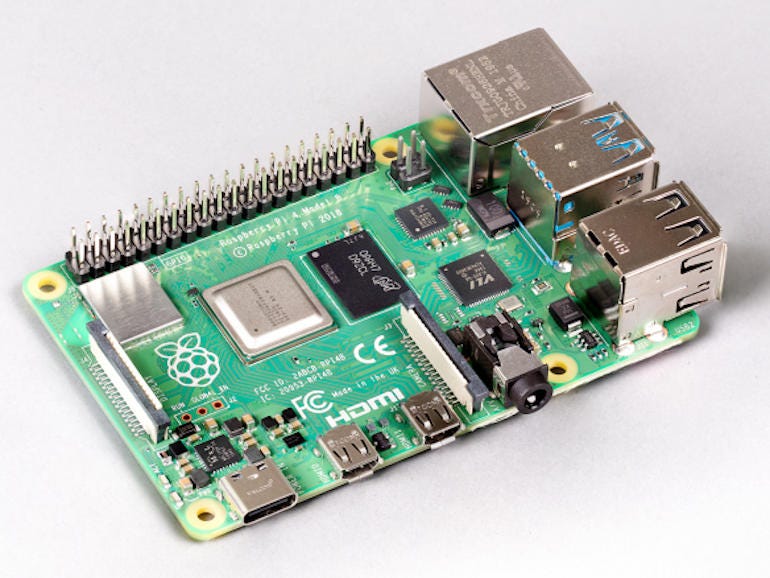


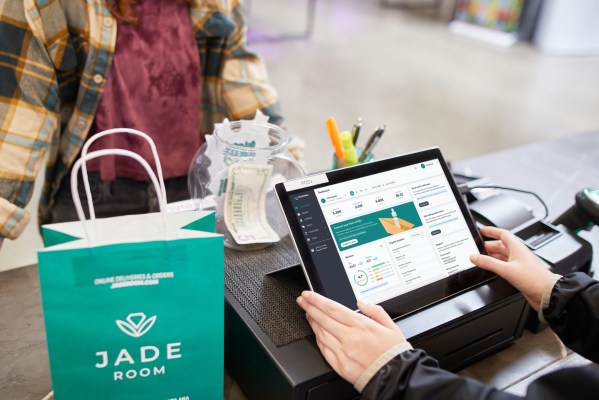
Pingback: join the illuminati
Pingback: this post
Pingback: jarisakti